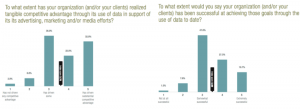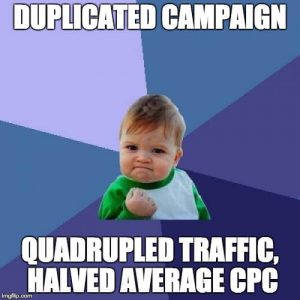Creating your best content involves more than accurate information. Here’s why user experience is a can’t-miss feature of effective content.
Too many businesses seem to forget or ignore the importance of the user experience (UX). If you don’t consider the emotional reaction to a product, service or feature, you’ll turn clients away in a flash.
Even so, UX goes far above the technical side of your company’s website and digital products. Constructing pleasant interactions must be the foundation of your communications and content.
Great UX can transform your content beyond bland facts and thinly-veiled pitches. You can share actionable information that helps people and converts them.
Absorb the following pointers to learn why UX is critical to your content and how to execute its principles.
Key takeaways:
- A UX-focused mindset is critical to creating your best content.
- The UX honeycomb is a practical framework for producing content with an excellent user experience.
- Content should be useful, usable, credible and valuable to your audience.
- Making your content findable, desirable and accessible puts it over the top.
Outstanding content and pleasing UX — Inseparable companions
You attract higher-value connections when you provide a pleasant experience at every turn. Luxury brands understand this well.
For example, you’d expect everything about a Bentley to be luxurious, but that doesn’t stop outside the confines of the vehicle. The sales room floor, vehicle maintenance, website and blog should all run smoothly and give an air of extravagance.
Just like dinner from a three-Michelin-starred chef, presentation is a major factor in the enjoyment of your content. When you keep the experience of the user in mind as you craft written or recorded material, you’ll always put your best foot forward.
The UX honeycomb for content: 7 critical steps
In the early aughts, designer Peter Morville created the UX honeycomb to guide design teams. You can apply these same principles to your content to improve what you produce.
1. Useful
The usefulness of your content is the core of the issue. Will reading or watching the information do anything for your target audience other than take up time? Hopefully, you either educate or entertain the viewers or readers. (In the best scenarios, you’re able to do both.)
The struggle here is you can convince yourself your content is useful when all you’re really doing is coming across as “Pitchy McPitcherson” with the hard sell. Like good UX, focus on serving your audience first and the conversions will come.
2. Usable
You often have to step outside your box for an outside perspective to see if content usability is acceptable. Confirm that your audience can make practical use of your information. Being accurate does not always mean that your useful content is usable. For example, compare your favorite teachers in school to the ones who were hard to follow.
All the information was probably accurate, but only some were usable. Often, the difference was who made information real, alive and easy to understand.
Don’t bog your content down in jargon or bury a good thought in too many words. Online editing tools like Grammarly and Hemingway App can give you a leg up if your writing is too dense to be usable.
3. Findable
You’ve surely been navigating a site or an app and pulling your hair out while trying to find the answer to a simple question. Don’t let your content be like a clunky site.
Help your audience find the answers they want with a structure that makes locating information easy. People do more scanning than deep reading nowadays, so break things up into digestible chunks and use keywords effectively.
“Findable” should be of particular note to marketers trying to master search engine optimization. Google’s algorithm loves articles and videos that provide quick and easy answers and rewards such content with enviable rankings and featured snippets.
4. Credible
Credibility is another aspect that makes you a winner with an audience and search engines. The age of artificial intelligence means people will be more skeptical than ever that an author is genuine and knows what they’re talking about.
Google is doubling-down on highlighting human-created content by looking for articles with E-E-A-T. That acronym stands for experience, expertise, authoritativeness and trust.
Speak personably and in your own voice to a specific niche to be original and credible. Share stories from your own experience whenever possible to establish yourself as an authority and a thought leader.
5. Valuable
The value of your content closely relates to its usefulness but goes deeper. In UX, value is not just monetary savings but could also be time and energy.
The key is that you help someone achieve something they couldn’t do otherwise. Measure your value by interacting with your audience and determining that what you provide actually works for them.
6. Desirable
Desirability and aesthetics are huge in UX, and rightly so. A significant part of a user’s experience is how the product looks and feels.
How your content looks and feels is important, too. Think about it: Do you want to decipher a story scribbled on crumpled-up paper in poor grammar or relax with a book in lovely leather binding with full-color illustrations?
Pay attention to your formatting and images in articles and the quality of your video editing. Your content will be more pleasing to the eye and deliver more value.
7. Accessible
Fortunately, we live in a more inclusive world for people with disabilities. Your formatting and readability shouldn’t look pretty just for the sake of aesthetics.
Keep in mind accessibility as you write, edit and record content. Adding alt texts to images is a great start, especially as you update old articles.
Also, remember that optimizing for voice search helps with accessibility and helps your SEO. Remember to opt for inclusive language and to keep learning.
UX and content: Together for the win
Excellent content looks good, feels good and delivers real value to your audience. Use the preceding principles from the UX honeycomb to enhance your content going forward.
The post Why prioritizing UX always leads to better content creation (and how to do it) appeared first on MarTech.
MarTech(4)








